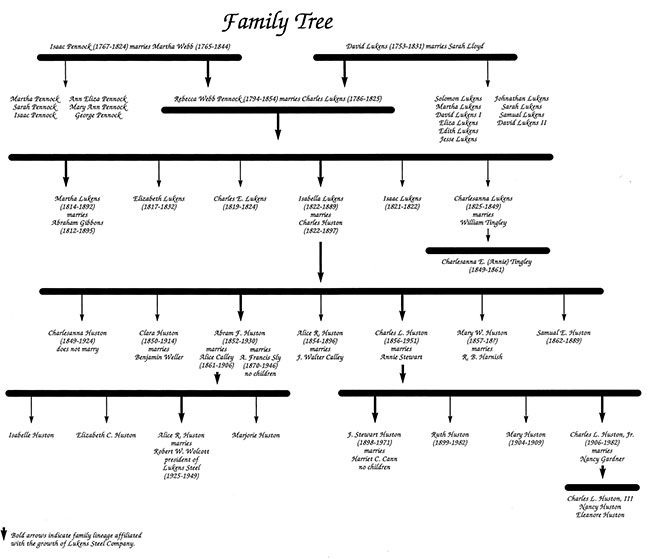In 1850, she reflected back to those difficult times after her husband’s untimely death and wrote in her autobiography, “I have thoroughly repaired the mansion house, built good and substantial tenant houses for my workmen, put much lime and fencing on the farm.” And further, “I had built a very superior mill, though a plain one, and our character for making boiler iron stood first in the market, hence we had as much business as we could do.” The survival of the mill from those difficult years was the strongest testimony to Rebecca Lukens’ success.
An era of Coatesville history closed on December 10, 1854 with the passing of Rebecca Lukens at Brandywine Mansion — her place in history secure, her character and example a lasting legacy. Rebecca left the iron business to her sons-in-law but divided the land between her daughters. On her deathbed she said “I have brought my sins and sat them at my Saviour’s feet and he has borne for me what I could not bear for myself.”
Abram Gibbons withdrew from the partnership in 1855, capping his successful career as an iron master with a new venture in banking. He was a founder and first president of the Bank of Chester Valley, which opened in 1857. Now First Niagara, the business was Coatesville’s first commercial bank, and the second bank established in Chester County. The bank's notes featured an engraving of Rebecca's mill. Dr. Huston purchased Abram Gibbons’ interest in the iron business, becoming sole proprietor in 1855.
Family management continued through the 1800s and well into the twentieth century. In 1890, the firm left behind traditional partnerships, incorporated as a stock company, and was named the Lukens Iron & Steel Company, after Dr. Charles and Rebecca Lukens. The Lukens name would last until 1998.
Rebecca successfully operated an iron site through the Industrial Revolution and economic troubles. Her focus on boiler plate made the business innovative and central to industrialization. And much like the characteristics of boiler plate, Rebecca could be relied upon to perform admirably under pressure. Rebecca Lukens was, indeed, a woman of iron.



